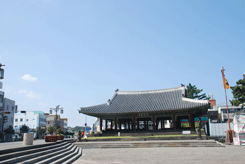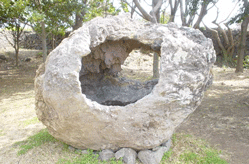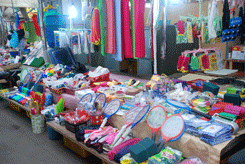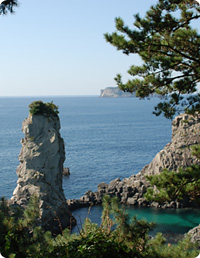WALKING
Jeju / 5 hours



Tour Highlights
- Gwandeokjeong Pavilion
- Mokgwana Office Complex
- Dongmun Market
- Jeju Folklore and Natural Hisotry Museum
- Samseongheyol Shrine
Jeju (- - -)
City tour highlights are in Old Jeju, while more hotels are centered in New Jeju. Jeju walking tour begins with a visit to the Gwandeokjeong, the oldest building in Jeju which was previously the site of government offices in the period of the Joseon dynasty (1392-1910). On its front stand two Dolharubang figures serving as fertility and protective totems. Both statues have protruding eyes, bulbous nose, tightly closed lips and a phallic symbol head under the brimmed hat. Both arms are bent at the elbow, hands resting above and below a rotund stomach. Many couples and visitors as well come here, each standing to either side, to have their pictures taken with their hands on its nose.
A group of buildings in the neighborhood is a restored Mokgwana, which has been the hub of local administration since Tamna period. A short walk takes you to a bustling market grown up in the old city center, you will explore Dongmunsijang, a traditional market grown up in the old city center. It is a mix of a covered and an open-air bazaar that is full of cloths, souvenirs, food, distinct smells, and people. In addition, you will find mounds of colorful peppers and spices, enormous heads of grinning whole pigs' heads and an endless variety of fishes, and elderly women with machetes hacking at fresh fish and packaging it for customers.
Enjoy a stop at Dongmunsijang, grown up in the old city center. It is a mix of a covered and an open-air bazaar that is full of cloths, souvenirs, food, distinct smells, and people. In addition, you will find mounds of colorful peppers and spices, enormous heads of grinning whole pigs' heads and an endless variety of fishes, and elderly women with machetes hacking at fresh fish and packaging it for customers.
Then, continue walk to Jeju Folklore and Natural History Museum, an excellent facility featuring a significant collection of crafts, tools and equipment as well as geological features, marine organism, plants, animals and minerals native to Jeju Island - the perfect way to learn about the history and culture of Jeju. At the entrance, you cannot possibly miss the fancy looking volcano bombs. In the folklore exhibition hall, you can experience the traces of Jeju's ancestors with traditional thatched houses, boats, agricultural tools, and a variety of other implements used by women divers who live a hard life diving for seafood. Outdoor exhibition is highlighted by millstones, grave guards, tombstones and various stone tools used for daily living. With all these features combined, the tour gives you a glimpse into tenacious and independent lifestyle of Jeju islanders.
A short walk from the museum is Samseonghyeol literally three clan hole, a very symbolic spot to the islanders. According to legend, it was here that three demigods emerged from the holes in the ground to become the founding fathers of Tamna and its people. There is an exhibition hall where you can trace the birth of Jeju. In 1526, an altar was built and wall was erected around the holes, and the descendants began offering spring and autumn memorial services. Since that time, they continue to uphold the traditions and still perform ancestral rites twice a year on the 10th of April and October. Even more amazing aspect is that moisture from rain and snow do not penetrate the holes and the surrounding old trees face them at an angle as if they are worshiping three founders.






